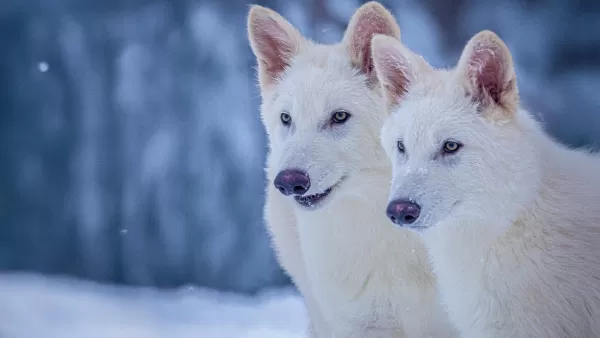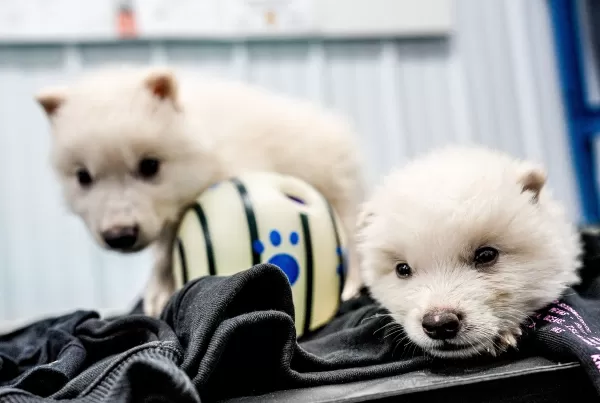Bringing a super-sized canine back from extinction after 12,500 years might sound like the plot of a blockbuster movie filled with special effects, but it's now a reality thanks to the efforts of Colossal Biosciences. This biotech company has successfully used the DNA of the common gray wolf, combined with gene-editing techniques and domestic dog surrogates, to bring three dire wolves into existence: Romulus, Remus, and their younger sister, Khaleesi. These awe-inspiring creatures, residing in a secret location in the US, embody the vision of any mother of dragons with their huge, white, and majestic appearance.
 Romulus and Remus at three months old
Romulus and Remus at three months old
Ben Lamm, CEO of Colossal, expressed his pride in the team's achievement, stating, "This massive milestone is the first of many coming examples demonstrating that our end-to-end de-extinction technology stack works." The team's innovative approach involved using DNA from a 13,000-year-old tooth and a 72,000-year-old skull to create healthy dire wolf puppies. Lamm emphasized the magical aspect of their technology, saying, "It was once said, ‘any sufficiently advanced technology is indistinguishable from magic.’ Today, our team gets to unveil some of the magic they are working on and its broader impact on conservation."
 Romulus and Remus at one month old
Romulus and Remus at one month old
Colossal Biosciences is no stranger to making headlines. Previously, they engineered a Colossal Woolly Mouse, resembling a mammoth, by analyzing 59 woolly, Columbian, and steppe mammoth genomes. Critics argue that the dire wolves are essentially normal wolves in fancy dress, questioning the authenticity of their genetic makeup due to the limited availability of dire wolf DNA.
However, the company's mission extends beyond creating social media sensations or owning extraordinary pets. Colossal Biosciences aims to use its findings to enhance conservation efforts and preserve current species for future generations. Dr. Christopher Mason, a scientific advisor and board member, highlighted the transformative nature of their work, stating, "The de-extinction of the dire wolf and an end-to-end system for de-extinction is transformative and heralds an entirely new era of human stewardship of life."
Mason further explained that the technologies developed for the dire wolf project could significantly contribute to saving other endangered animals. He emphasized the broader implications of their work, saying, "The same technologies that created the dire wolf can directly help save a variety of other endangered animals as well. This is an extraordinary technological leap in genetic engineering efforts for both science and for conservation as well as preservation of life, and a wonderful example of the power of biotechnology to protect species, both extant and extinct."
To ensure the well-being of these dire wolves, Colossal Biosciences has collaborated with the American Humane Society and the USDA to establish a suitable environment on their 2,000+ acre preserve. The wolves are cared for by a dedicated team, ensuring they receive the attention and care befitting their superstar status.








